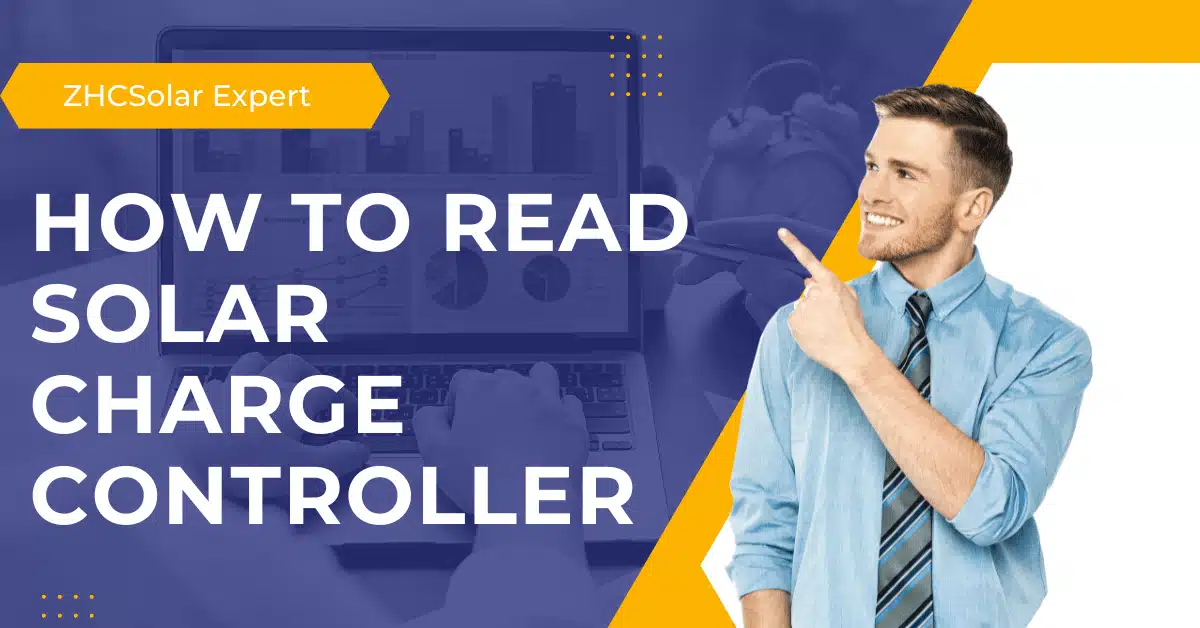Reading your solar charge controller is an important part of making sure that your solar system is functioning properly. Knowing how to read a solar charge controller will give you the information you need to make sure that your system is working as efficiently as possible. In this blog post, we will discuss how to read a solar charge controller and what information you can find from it.
What is a solar charge controller?
Solar charge controllers play an essential role in solar power systems. It helps to manage the power output from your solar panels and ensure that you’re always getting the most out of your investment.
They help your battery bank to stay charged during periods of low sunlight, and can also be used to disconnect your batteries from the grid in case of an emergency power outage.
How to Read Your Solar Charge Controller?
There are two main types of solar charge controllers, the traditional PWM Solar charge controller and more modern MPPT Charge Controllers that typically has Far more powerful features. Depending on which charge controller you use, you’ll want to know how to read them.
There are a number of different buttons and settings and while the purpose for most of these are relatively obvious, setting and then understanding how it works isn’t.
When you buy a solar controller, it often comes with a built-in display or an external display. On these displays you can see several sections with parameters, they are solar panel status, charging status, Battery type, discharge parameters, and load status.
Referring to the manual, you can understand the meaning of each of these parameters and set them at the same time.

Let’s reading the 80A Charge Controller Display as example
Look at the first solar panel symbol on a display. The arrows besides flashing represent it has solar power inputs. The “X” Flash when the solar input is fail.
Under the solar panel, the digits represent the charging currents.
Under the charge current, it’s the PV OFF Value, which represents the stop charge value, when the input voltage is too high, it will automatically stop the charge. You
can set the value or keep it default.
Under the PV OFF, it’s the temperature digits, which represents the environment temp around the temp probe.
The Center shows the Battery Status, In the Center Top, is the Battery bank Voltage.
On the Battery symbols, you can see the Current Battery Capacity, expressed as a percentage.
On the right of battery voltage, the arrow and “X” represent the discharge process and status, flash means it works as normal, “X” FLASH means it does not work.
The “Bulb” symbol is representing the “Load”, as some small lights where you can connect it with the load section of the charge controller.
The Load, Load OFF and Load On Value are the parameters to control the Load Running, you can set the discharge current, discharge cease voltage, and discharge restore voltage to control the Load Running and Timing it.
MPPT controllers are more complex than PWM controllers, and their setup is more complicated, even with multi-level setup pages.
Let’s read the EPever TracerAN MPPT Charge Controller for an example.
Reading MPPT Solar Charge Controller


As shown above, these icons will change or blink depending on the system status.
With the help of button operation, you can access different function areas to view and set parameters, including charging current, charging voltage, stop charging setting, temperature, battery type, battery condition, and load condition as mentioned above.
Relate Topics:
How to Set Solar Charge Controller in 2023
Solar Charge Controller voltage setting Guide
Solar Charge Controller troubleshooting Guide
Solar Charge Controller Blinking & Flashing Meanings and Fix
Solar Charge Controller Error Codes Guide
Conclusion
A Solar Charge Controller will come in handy for a number of things, and having one that is easy to read is one of the most important things you should be looking for when choosing a product. If you’ve never read a solar charge controller before, it can feel a little intimidating, but the good news is that these controllers aren’t as confusing as they first appear after you read our post.
